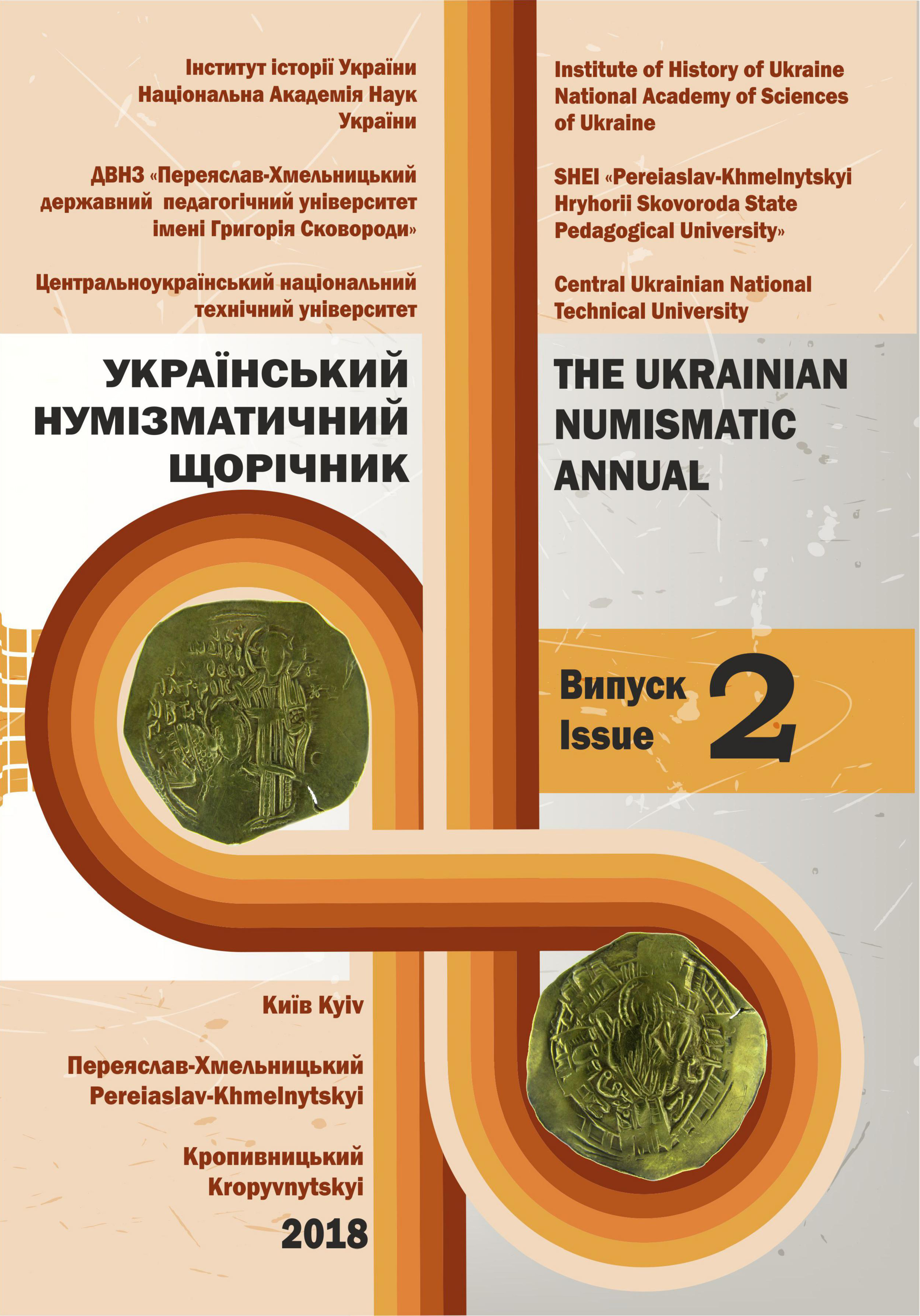НОВЕ НЕДЖУЧИДСЬКЕ ІМ’Я НА ПІЗНЬОДЖУЧИДСЬКИХ МОНЕТАХ: ДАНГИХАНА САЇД-АХМАДА II З ПОЗНАЧЕННЯМ МІСЦЯ КАРБУВАННЯ ХАЙДАР-БАЗАРІ
A NEW NON-JOCHI NAME ON LATE JOCHI COINS: DANGS OF KHAN SAID-AHMAD II WITH THE MINT NAME HAYDAR-BAZARI
Author(s): Yuriy V. Zayonchkovskiy, Vladimir TishkinSubject(s): Archaeology, Economic history, 15th Century
Published by: ДВНЗ Переяслав-Хмельницький державний педагогічний університет імені Григорія Сковороди
Keywords: numismatics; Golden Horde; dang; Said-Ahmad II; Khongirat Haydar-bek; Haydar-bazari;
Summary/Abstract: The group of dangs of Khan Said-Ahmad II of Haydar-Bazari as mint place is investigated. Photographs of some of the coins of this issue were previously published but, according to the authors, with an incorrect interpretation of the reverse legends. The die chain (4 obverse dies, 7 reverse dies, 10 die pairs) has been reconstructed and another reading of the coin legends has been proposed. The mint place of this group is designated as Haydar-bek-bazar, Haydarbazar or, Haydar-bazari. The authors believe that the bazaar indicated on the reverse was personified by the name of the KhongiratHaydar-bek who was first the “right hand” and son-in-law of Khan Ulu-Muhammad, then betrayed him, rebelled and put Khan Said-Ahmad II on the throne. Khongirat Haydar was the Beylerbey of Khan Said-Ahmad from 1433 to 1441, until his death. The investigated dangs can be dated by this period of time; they were struck at the mint at the nomad horde of Khongirat Haydar-bek. Coins with the name of the Beylerbey Haydar’s horde may have been a demonstration and propaganda of his high status in the state.
Journal: Український Нумізматичний Щорічник
- Issue Year: 2018
- Issue No: 2
- Page Range: 70-80
- Page Count: 11
- Language: English, Russian, Ukrainian

